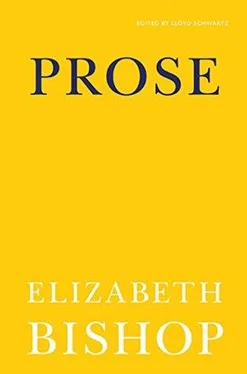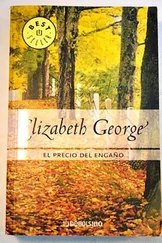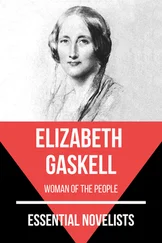A dish of roasted manioc flour is always served with the beans and rice, indeed it is what the unqualified word “flour” signifies. It is sprinkled over the food, to thicken the sauce, and perhaps to add a little textural interest to the monotonous diet, since its nutritional value is almost nothing. It is also used in making various cakes and pastries. There is an impressive variety of these in Brazil, using manioc and cornmeal as well as wheat flours, coconut, brown sugar, etc., each with its own name, frequently religious in origin and varying from region to region. Helena mentions a dozen or more and there are whole books on the subject. Desserts are often pudims, usually, or unusually, heavy, and a great variety of fruit pastes, guava, quince, banana, etc., served with a small piece of hard white cheese. On a good Brazilian table, desserts appear, or always used to, several at a time. Cinnamon is the universal spice. Most Brazilians have very sweet tooths.
Breakfast is simply coffee, black or with boiled milk, and a piece of bread, although Helena varies hers strangely with cucumbers. Coffee is served after the other meals, at intervals in the day, and inevitably to callers at any time, in the form of cafezinhos, “little coffees,” black, boiling hot, and with the tiny cup half-filled with sugar. (The sugar is only partially refined so it takes quite a lot to sweeten a cup.) It is made by stirring the very finely ground coffee into boiling water, then pouring it through a coffee bag. These brown-stained bags and their high wooden stands are a symbol of Brazil, like black beans, and they are seen everywhere, even in miniature, as toys. There are laws to ensure that the coffee served in the innumerable cafés is unadulterated and of the required strength. (In an American movie being shown in Rio a character was told that he’d feel better after he had “a good breakfast, porridge and bacon and eggs and coffee,” and this speech was rendered by the Portuguese sub-title, “Come and take coffee.”)
A glance at the photographs will perhaps explain what may seem like Helena’s over-emphasis on fruit, or unnatural craving for it. Through June, July, and August, the long dry winters in that stony region, when everything is covered with red dust, with a constant shortage of fresh vegetables and the only drinking water running in open gutters as it was at that time, “sucking oranges” must have been the best way to quench one’s thirst, and stealing fruit an almost irresistible impulse.
Money
Dr. Brant has given me the following information about the value of money at the time the diary was kept.
The mil reis (a thousand reis, the plural of real, or “royal”) was worth twenty cents of U.S. money. (As a banker, Dr. Brant points out that the dollar has since been devalued, so that a mil reis would be worth ten cents of today’s money. But as Helena says, we are speaking of “bygone days” and it seems simpler to keep it at the earlier evaluation.) Five mil reis would therefore be a dollar, 100 reis two pennies, and so on. Dr. Brant gives a list of approximate prices of goods and labor at the time:
A pound of meat: 10¢
A pound of sugar: 3¢
A dozen eggs: 4¢
A quart of milk: 4¢
A pound of butter: 12¢
A pair of shoes: $3.00
A good horse: $20.00
Average rent for a good house: $8.00 a month
A cook: $2.00 a month
Wages of Negroes employed in mining: 40¢ a day (paid to the whites who rented them out. In the town, or in agriculture, Negro wages were less.)
Arinda receives about $100 for the diamond she finds, page 6, Helena makes $6.00 by selling her mother’s gold brooch without a diamond in it, page 172 ff.; and the grandmother sends home a present of $10.00 to her daughter, on page 48, etc.
Acknowledgments
I am indebted to many friends and acquaintances for the help they have given me, both as sources of information about Diamantina and its life and vocabulary, and with the actual work of translation. Thanks are due:
In Diamantina, to Antonio Cicero de Menezes and his granddaughter; to Armando Assis, manager of the Hotel de Tourismo; and to many other inhabitants who showed me the way or went with me, invited me into their houses, and patiently repeated and spelled out the names of things.
To Vera Pacheco Jordão, who went with me to Diamantina and came to my assistance when my Portuguese failed me; to Manuel Bandeira; to Dora Romariz; to Otto Schwartz; and to Mary Stearns Morse, who typed the difficult manuscript.
To Rodrigo Melo Franco de Andrade, head of the Patrimonio Artistico of the Brazilian Department of Education, who took an interest in the book and who got out the Department’s collection of photographs of Diamantina for me to choose from.
To my friend Pearl Kazin, who, in New York, received the manuscript and gave me invaluable help with it.
To my friend Lota de Macedo Soares, who reluctantly but conscientiously went over every word of the translation with me, not once, but several times.
To Dr. Augusto Mario Caldeira Brant, who also went over every word of the translation, and without whose remarkable memory for the customs and idioms of Diamantina in the ’90’s a great deal of detail might have been lost. I am grateful to him for many suggestions, and many of the footnotes are his.
But most thanks of all are, of course, due to Dona Alice herself for her wonderful gift: the book that has kept her childhood for us, as fresh as paint. Long may she live to re-tell the stories of “Helena Morley” to her grandchildren and great-grandchildren.
Sítio da Alcobacinha
Petrópolis
September 1956
A New Capital, Aldous Huxley, and Some Indians
When Aldous Huxley and his wife visited Brasil recently, the Cultural Division of Itamarati, the Brasilian Department of Foreign Affairs, arranged for them to make a trip to Brasília, the new capital of the country, with an additional trip farther into the interior to see the Uialapiti Indians. The Department of Foreign Affairs is always referred to as Itamariti because it is housed in the former home of the Barons of Itamariti in Rio de Janeiro, a handsome, solid residence, really a palace on a small scale. Behind its high walls, surrounded by magnificent Imperial Palms, are a garden and a formal pool complete with swans, where diplomatic dinner-parties are held.
The Brasilian nobility created by the first and second Emperors were fiercely nationalistic and proud of their semi-civilized country, and for their titles they invariably chose Indian place-names, such as Itaboraí, Tamandaré, or Itamarati. One could graph modern Brasilian history very patly on the three points connected by the Huxley trip: by way of Itamarati to the safe, democratic insipidity of the name “Brasília,” and then beyond, to the dwindling tribes along the Xingu River, Indian again, for here as in the United States, many geographical names have held to their originals, or approximations of them.
Ten people went on the trip: Huxley and his Italian wife; two men from Itamarati, one the head of the Cultural Division, José Meira Penna; Antônio Callado, editor-in-chief of the biggest Rio morning paper, and his English wife; a Polish-Brasilian girl who practices architecture in Rio; a young Englishman from the British Embassy; a girl who had been acting as the Huxleys’ interpreter in Rio; and myself, the only American. They were all to fly to Brasília from the state of Minas Gerais where the Huxleys had been taken to see a colonial town or two, and I was to meet them there for lunch, on a Saturday at the big new Oscar Niemeyer hotel.
Brasília is about six hundred miles northwest of Rio, in the state of Goiás; at present the railroad nearest to it ends at Annapolis, a small town eighty-five miles away. It takes three days, and trains on both regular gauge and narrow gauge tracks, to reach Annapolis from Rio; from there trucks and jeeps can go on to Brasília. So far only two trainloads of material for the new capital have managed to make the trip that way; all the rest — the staggering quantities of cement, bricks, steel, glass and wood necessary to start building a modern city — have gone by road, by bad roads — everything, that is, that has not been flown in by plane. Since gasoline is the biggest item of importation in Brasil, accounting for some 24 per cent of its dollar expenditure, this attempt to build a city before building a railroad to its site is one of the most serious criticisms of President Juscelino Kubitschek’s new capital.
Читать дальше












